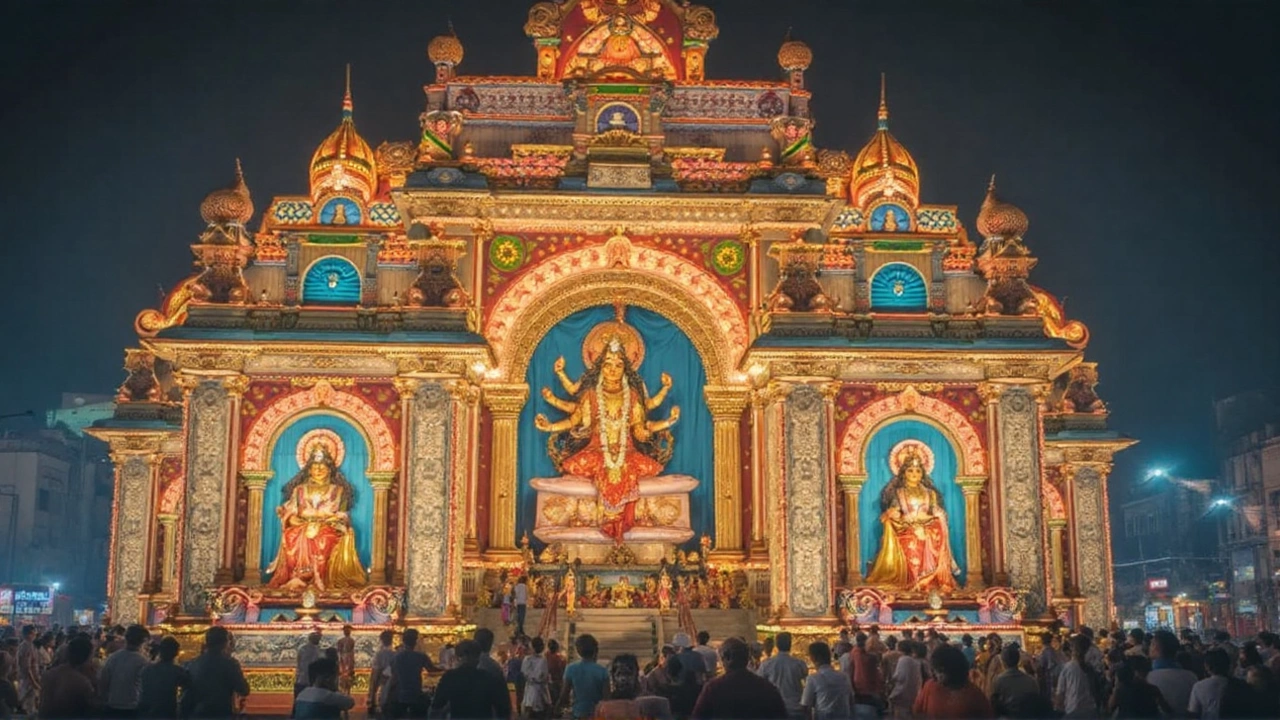What Triggered the Catastrophe?
At 3 a.m. on September 24, the India Meteorological Department (IMD) recorded a sudden deluge that dumped more than 250 mm of rain over Kolkata and its surrounding districts within a six‑hour window. This amount shattered the city’s historic September rainfall record by nearly 60 mm, overwhelming storm‑water drains that were already strained from earlier monsoon showers. Meteorologists linked the extreme event to a deep‑layered low‑pressure system pulling moisture from the Bay of Bengal, combined with a stalled western disturbance that forced the rains to linger far longer than usual.
The timing could not have been worse. The city was gearing up for the Durga Puja festivities, a holiday that draws millions of visitors and fills streets with processions, lights, and crowds. Hotels were fully booked, public transport was operating at peak capacity, and many families were traveling to temporary residences for the celebrations. The unexpected flood therefore hit a city already stretched thin, compounding logistical nightmares for both residents and authorities.
Human Cost and On‑Ground Reality
By the time emergency crews could assess the damage, the death toll had risen to 12. Kolkata flooding claimed nine lives inside the municipal limits, with eight victims suffering fatal electrocution after floodwaters short‑circuited exposed power lines and household wiring. Two more residents drowned after being trapped in their basements when water rose faster than they could escape. The remaining death occurred in a nearby suburb where a collapsing wall caused a fatal injury.
Rescue teams from the state disaster response force, local police, and volunteers scrambled to pull people from submerged apartments, cars, and office complexes. In the Howrah Bridge area, dozens of commuters were stranded on a stalled bus for over five hours, their windows fogged with rain as the water rose to ankle height. In low‑lying neighborhoods such as Tangra and Entally, entire lanes turned into canals, forcing families to climb onto rooftops and signal for help with flashlights and mobile phones.
Public transportation ground to a halt. The Kolkata Metro shut down two major lines, leaving commuters with no alternative but to wade through knee‑deep water or wait for delayed bus services that had been rerouted to higher ground. Netaji Subhas Chandra Bose International Airport operated on a limited schedule, with many flights delayed or canceled due to inundated runways and taxiways.
Emergency hospitals reported an influx of patients with electrical burns, hypothermia, and injuries from slips and falls. Doctors warned that the combination of stagnant water and broken sewage lines could spark a secondary health crisis, bringing cholera and dengue concerns to the forefront.
City officials, led by the Mayor and the Chief Minister’s disaster management team, promised that water would recede by Wednesday evening. However, engineers cautioned that drainage pumps, many of which were already damaged, would need at least 48 hours to clear the deepest pockets of water in the city’s core. Residents in the most vulnerable districts were urged to remain vigilant, avoid wading through floodwater, and stay informed through IMD’s continuous bulletins.
As the city grapples with the aftermath, long‑term questions emerge about Kolkata’s flood preparedness. Critics point to outdated drainage maps, encroachment on natural waterways, and insufficient investment in urban flood defenses. Meanwhile, community groups have started sandbagging efforts and setting up temporary shelters, showcasing a resilient spirit even amid the chaos.
